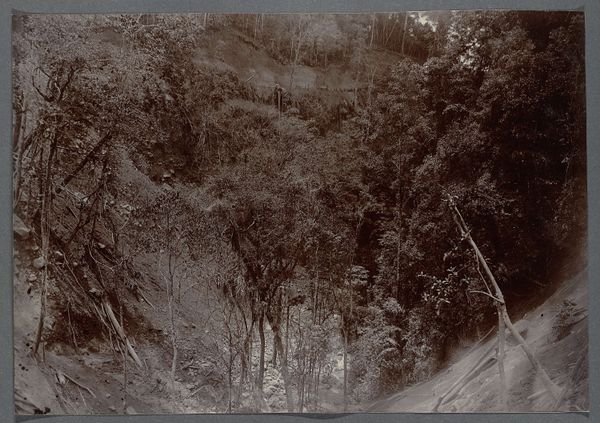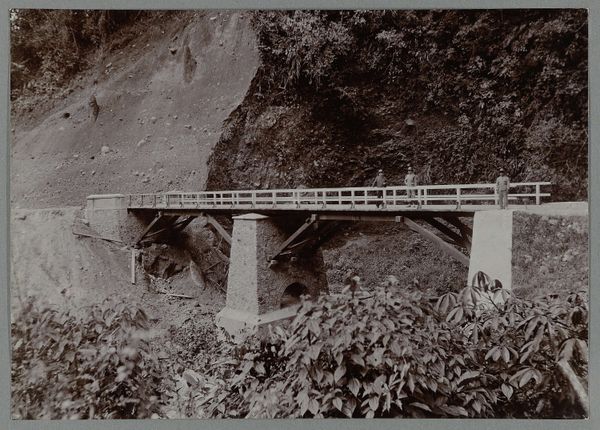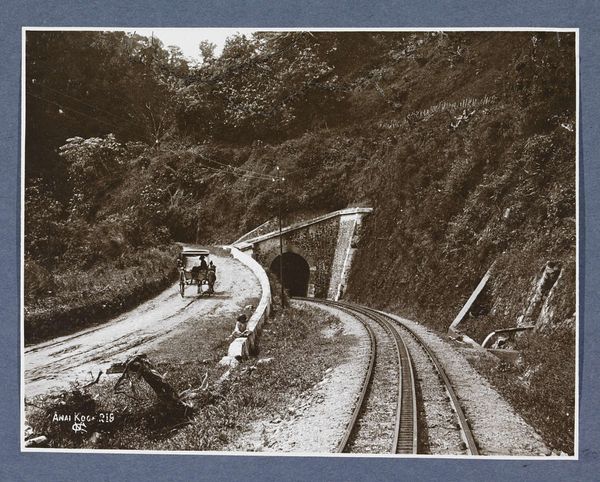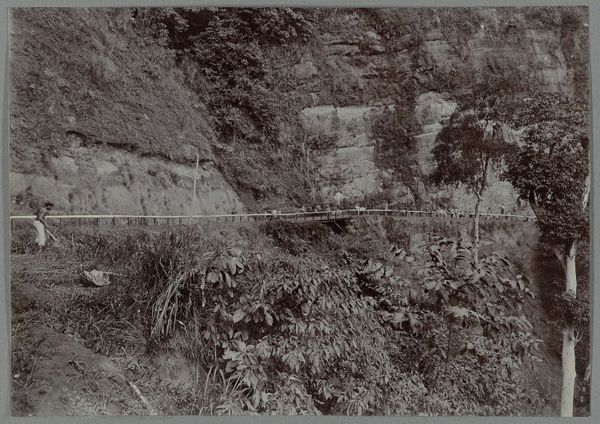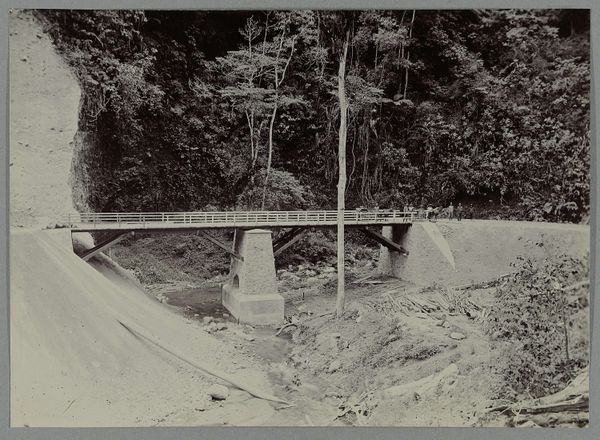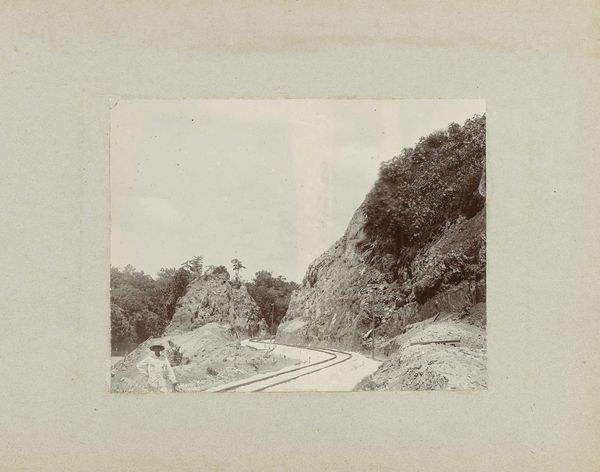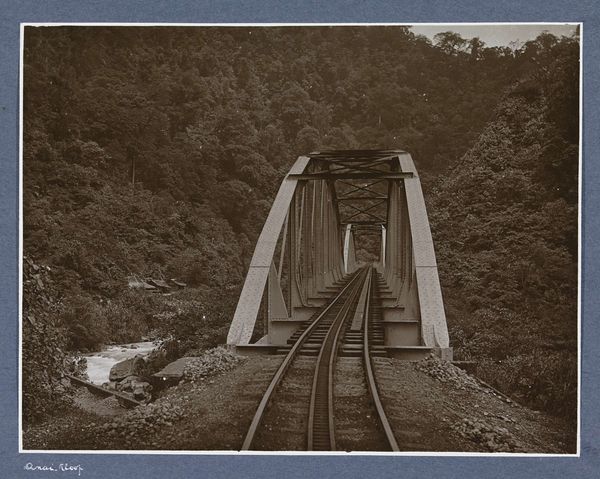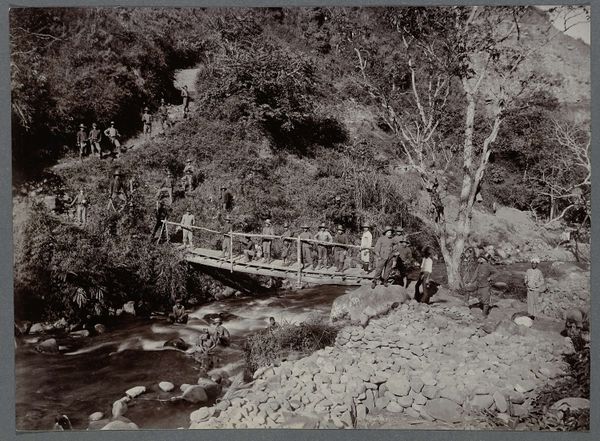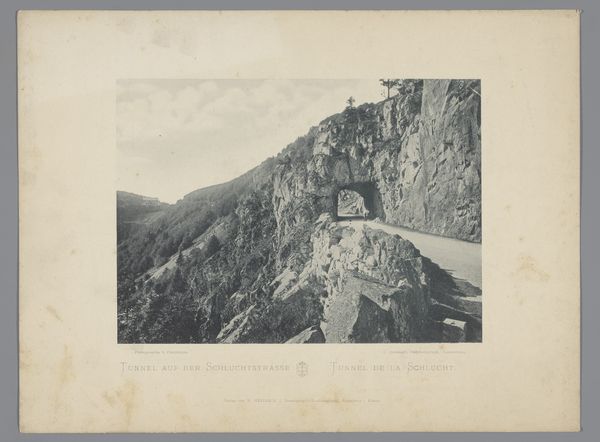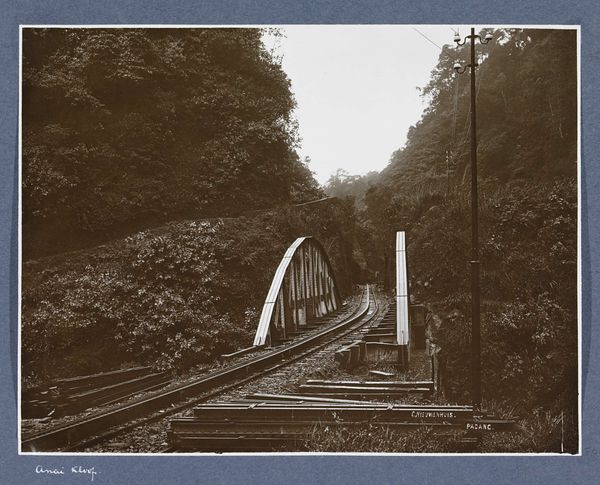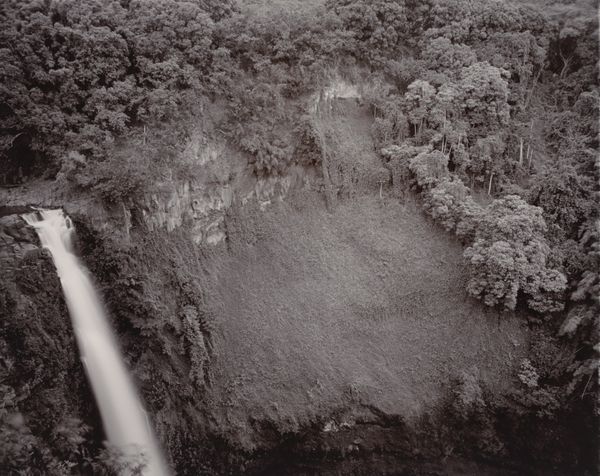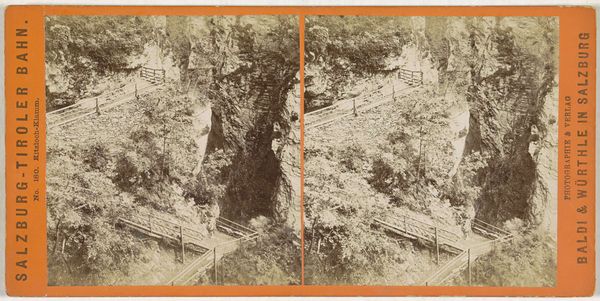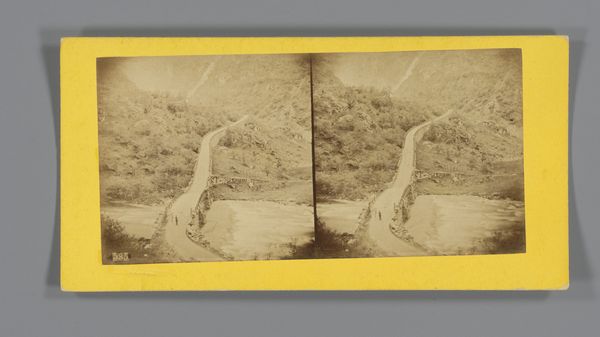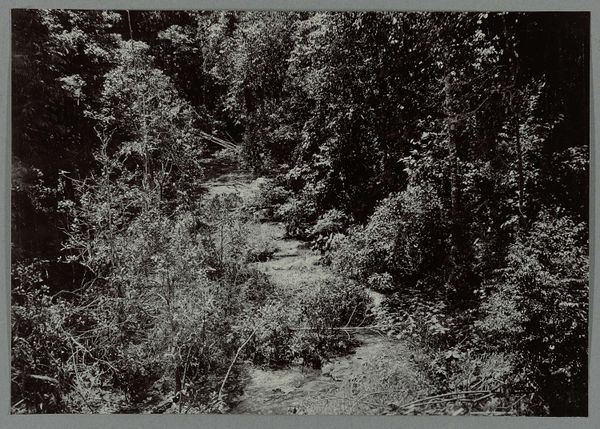
Spoorwegtunnel naast een rivier in de Anaikloof op Sumatra c. 1900 - 1920
0:00
0:00
print, photography
# print
#
landscape
#
river
#
photography
#
orientalism
Dimensions: height 219 mm, width 285 mm
Copyright: Rijks Museum: Open Domain
Curator: Today we're looking at "Spoorwegtunnel naast een rivier in de Anaikloof op Sumatra," or "Railway tunnel next to a river in the Anai Gorge on Sumatra," a photograph taken by Christiaan Benjamin Nieuwenhuis, sometime between 1900 and 1920. Editor: My first thought is about the visual weight—that heavy, dark tunnel contrasted against the seemingly infinite expanse of jungle foliage. It gives me a sense of human imposition on a very wild landscape. Curator: Indeed. Nieuwenhuis has framed the image to emphasize this very point. The diagonal lines of the railway lead the eye directly to the dark void of the tunnel, a powerful shape in this otherwise natural scene. Observe the almost monochromatic quality, primarily browns and sepias; this uniformity flattens the picture plane, calling our attention to the contrasts of texture and light. Editor: It’s a scene of exploitation, though, isn’t it? This picturesque landscape, aestheticized through photography, served a colonial project. Who was benefiting from this railway? At what cost to the local population and the environment? We can’t ignore that the creation of this railway system, as romantic as it might seem here, would have necessitated displacing communities. Curator: I understand your point, but I’m drawn to how the photographer composes using the lines of the railway, directing the eye—a demonstration of visual artistry with available forms, no matter the cultural or historical setting. Editor: Yes, but considering this image, we need to ask: who is this image for? Who is invited to marvel at this vision of Sumatra? And how does this fit within colonial depictions of the Orient, framing it as simultaneously exotic and ripe for industrial progress at the expense of those who live there. Curator: Perhaps it’s both? The work does illustrate a moment of significant transformation in landscape through a formal mastery that uses tonal range and composition. Editor: Ultimately, to view this photograph through a contemporary lens asks us to confront its loaded context: industrial advancement is made through a colonial regime of control over the landscape and its people. Curator: Thank you for that crucial addition. By uniting our distinct vantage points, hopefully, we have revealed how history and aesthetics speak in conversation through art.
Comments
No comments
Be the first to comment and join the conversation on the ultimate creative platform.
